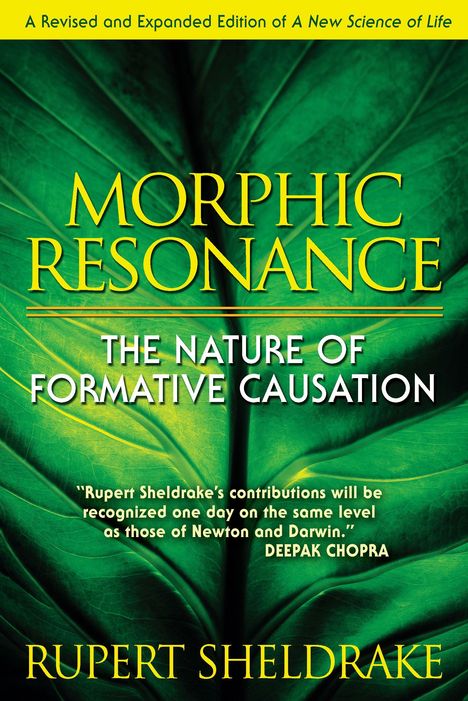Rupert Sheldrake: Morphic Resonance, Kartoniert / Broschiert
Morphic Resonance
- The Nature of Formative Causation
(soweit verfügbar beim Lieferanten)
- Verlag:
- Inner Traditions/Bear & Company, 09/2009
- Einband:
- Kartoniert / Broschiert
- Sprache:
- Englisch
- ISBN-13:
- 9781594773174
- Artikelnummer:
- 7176422
- Umfang:
- 352 Seiten
- Nummer der Auflage:
- 09004
- Ausgabe:
- 4th Revised, Expanded edition
- Gewicht:
- 574 g
- Maße:
- 227 x 151 mm
- Stärke:
- 22 mm
- Erscheinungstermin:
- 1.9.2009
- Hinweis
-
Achtung: Artikel ist nicht in deutscher Sprache!
Klappentext
NEW SCIENCE / BIOLOGY "Books of this importance and elegance come along rarely. Those who read this new edition of A New Science of Life may do so with the satisfaction of seeing science history in the making." --Larry Dossey, M. D., author of Recovering the Soul and Reinventing Medicine "For decades, Rupert Sheldrake has been at the leading edge of highly innovative and controversial ideas about the organization of biological systems. Morphic Resonance poses a serious challenge to traditionalists and is a most welcome book about how we see the world and how we should head off into the future." --Marc Bekoff, author of The Emotional Lives of Animals and Wild Justice: The Moral Lives of Animals "Morphic Resonance is destined to become one of the landmarks in the history of biology. It is rare to find so profound a book so lucidly written." --Bruce H. Lipton, Ph. D., cell biologist and bestselling author of The Biology of Belief: Unleashing the Power of Consciousness, Matter and Miracles When A New Science of Life was first published the British journal Nature called it "the best candidate for burning there has been for many years." The book called into question the prevailing mechanistic theory of life when its author, Rupert Sheldrake, a former research fellow of the Royal Society, proposed that morphogenetic fields are responsible for the characteristic form and organization of systems in biology, chemistry, and physics--and that they have measurable physical effects. Using his theory of morphic resonance, Sheldrake was able to reinterpret the regularities of nature as being more like habits than immutable laws, offering a new understanding of life and consciousness. In the years since its first publication, Sheldrake has continued his research to demonstrate that the past forms and behavior of organisms influence present organisms through direct immaterial connections across time and space. This can explain why new chemicals become easier to crystallize all over the world the more often their crystals have already formed, and why when laboratory rats have learned how to navigate a maze in one place, rats elsewhere appear to learn it more easily. With more than two decades of new research and data, Rupert Sheldrake makes an even stronger case for the validity of the theory of formative causation that can radically transform how we see our world and our future. RUPERT SHELDRAKE, Ph. D., is a former research fellow of the Royal Society and former director of studies in biochemistry and cell biology at Clare College, Cambridge University. He is the author of more than 80 technical papers and articles appearing in peer-reviewed scientific journals and 10 books, including The Presence of the Past, The Rebirth of Nature, and Seven Experiments That Could Change the World.
Biografie
Rupert Sheldrake, geboren 1942, studierte in Cambridge Biologie und Biochemie, später an der Harvard University Philosophie. An der Universität Cambridge promovierte er 1967 in Biochemie, lehrte am dortigen Clare College und war dort bis zum Jahr 1973 Forschungsleiter für Biochemie und Zellbiologie. Er befasste sich während seines siebenjährigen Stipendiums am Clare College in Cambridge sowie bei der Royal Society mit der holistischen Tradition in der Biologie, führte Forschungen zur Entwicklung von Pflanzen und zur Zellalterung durch und formulierte die Theorie der von ihm so genannten morphischen Felder, seine Grundlage der Hypothese eines Gedächtnisses der Natur.

